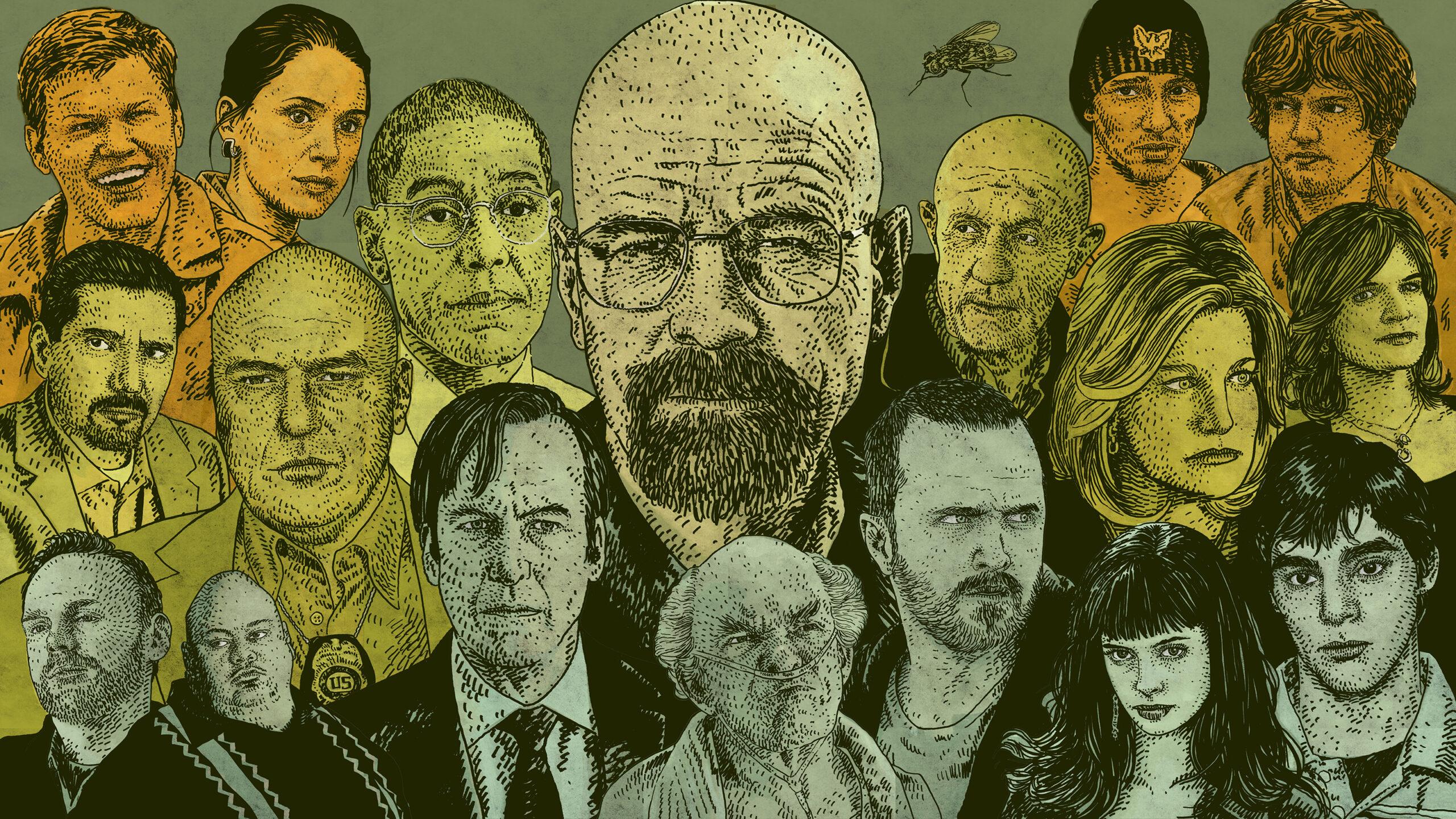The Ringer’s Definitive ‘Breaking Bad’ Episodes Ranking
From “Face Off” to “Ozymandias” to “Fly” to everything else, we’ve ranked all 62 episodes of the AMC classic ahead of ‘El Camino’Remember “I am the one who knocks”? Remember “Two men are coming to kill you”? Remember “Yeah bitch! Magnets!”? Six years ago, Breaking Bad aired its final episode, concluding Walter White’s arc from “Mr. Chips to Scarface,” and bringing to a close five seasons of propulsive, groundbreaking Golden Age TV. Now, Albuquerque’s underground world is opening up once again with El Camino, a film that will explore Jesse Pinkman’s aftermath following the events of the series finale. And because there’s much to recap—and celebrate—before the movie’s premiere on October 11, The Ringer is here to recall some of Breaking Bad’s highs, remember some of the show’s most important characters and plots, and speculate on where we may be headed. We start this two-week-long journey—where else?—with a ranking of every episode of Breaking Bad.
62. “Hazard Pay,” Season 5, Episode 3
Having tied up the last of the Gus Fring empire, Walt and Jesse launch their own meth business in earnest—with the help of Mike, now their third partner. They team up with a pest control company, whose employees—most notably the dreaded Todd (Jesse Plemons)—have their own criminal tendencies. This episode also marks what seems in the moment to be the first time that Walt meets Brock, Andrea’s young son, who survived a poisoning at the end of Season 4—one that Walt blamed on Fring, but which Jesse suspected, and later learns for certain, was actually Walt’s doing. Here, Brock doesn’t recognize the man who almost killed him. “Jesse tells me you were very brave,” Walt tells him, warmly, but the moment they’re alone together, he eyes the child icily, murderously. He’s a monster now, make no mistake. —Claire McNear
61. “Bug,” Season 4, Episode 9
The last time Jesse and Walt come to blows is hard to watch. There is eye-gouging, there is cheek-pulling, pieces of furniture are used as weapons. The scene doesn’t look like a junkie and a schoolteacher getting in an argument; it looks like two desperate men trying to kill each other. Just compare it to the comical toilet fight from Season 1 and you’ll see how much things have changed.
In “Bug,” the walls are clearly closing in on Walt. Hank is trying to make a trip to the Pollos Hermanos Factory Farm. Skyler is pressuring Walt to make a plan to get out of the meth business. Gus is still alive and finding his cook increasingly troublesome. So by the time Jesse and Walt begin their brawl, we know we’re watching the disintegration of the last honest relationship on the show. Walt is fighting a three-front war. And now he doesn’t have a single ally. —Chris Almeida
60. “Shotgun,” Season 4, Episode 5
There are lots of two-man team-ups in Breaking Bad. Hank and Gomie. Skinny Pete and Badger. Kuby and Huell. And, most toxically, Walt and Jesse. But what we get here is the buddy cop comedy we didn’t know we needed. Much to his surprise (and ours), Jesse spends the day doing pick-ups with Mike, complete with a music montage set to Ana Tijoux’s killer “1977,” which might be the best song the series ever used. That leads to all sorts of pick-and-roll conversational humor, including Jesse and Mike arguing over whether the former can smoke in the latter’s car (Mike declines the request in no uncertain Mike-like terms) and a declaration by Jesse that since he’s riding shotgun with Mike he must be Mike’s guy now (again, a hard on-brand no from Mike). The whole thing turns out to be another Machiavellian maneuver by Gus Fring—they set Jesse up to be the “hero” and manufacture a situation where he “saves” Mike, thus building Jesse’s confidence and hopefully steering him away from Walt and into their camp—but as with so many of these schemes, there are unintended consequences. This one ultimately starts Jesse and Mike down a path toward an elusive commodity that is in short supply for both men: something resembling friendship. —John Gonzalez
59. “Bullet Points,” Season 4, Episode 4
Pulling a con is difficult. Pulling a con on your brother-in-law who also happens to be a DEA officer obsessed with tracking you, the blue meth kingpin of New Mexico, down, is another. Skyler, knowing how hard it will be to explain how she and Walt had the means to buy the car wash to Hank, provides her husband with a list of bullet points. This script, she posits, is their best chance of flying under the radar. Walt has a gambling problem—or at least that’s what they announce, going so far as to visit Gamblers Anonymous meetings to sell their ruse. Only, Walt is terrible at blackjack. So he’s a gambler in recovery. Using his cover, Walt’s able to learn more about Hank’s case against the now-deceased Gale. It’s not a mindblowing deception, but it beats the house. —Shaker Samman
58. “Thirty-Eight Snub,” Season 4, Episode 2
“It’s for defense … defense,” Walt says, assuring himself early in “Thirty-Eight Snub” that the serial number–less thirty-eight snub that he’s bought from an underground gun dealer is not meant to enable his descent into unambiguous murder. Then, throughout the episode, Walt tries to use his gun for decidedly Not Defense, first preparing to shoot Gus at the lab, then later at his house, and then even proposing to Mike that they team up to kill Gus. At every juncture, Walt is foiled. Twice by Tyrus, Gus’s new middleman who is implied to be trailing Walt everywhere, and a third time by Mike, who rejects Walt’s offer and punches him in the face. All the while, Walt is still trying to convince himself that he is a good man doing a necessary but unpleasant thing. This is one of the last times you believe he might be right. —Chris Almeida
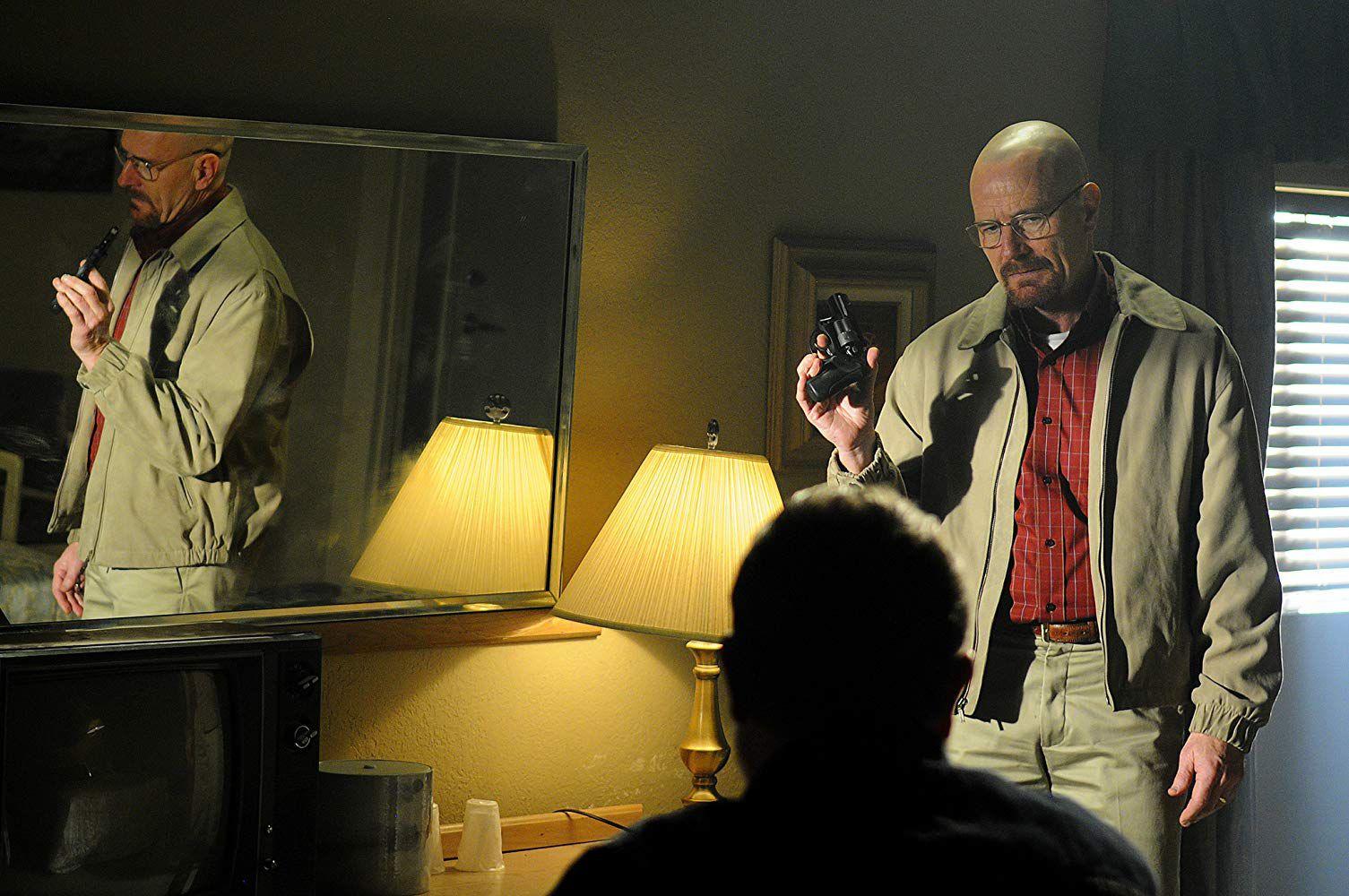
57. “Más,” Season 3, Episode 5
Maybe no episode in the series’ run so clearly traces a path from how things were to how they are. The chapter opens with a flashback: Walt gives Jesse what remains of his life savings to purchase an RV. Jesse promptly spends most of it at a strip club, before purchasing the famous Winnebago for $1,400 in less than legitimate circumstances. When we rejoin the present, Walt has retired from the drug game. But that doesn’t stop Gus from unveiling a present of sorts: a state-of-the-art superlab, built in the catacombs of his laundry facility. Walt is ambivalent about rejoining the industry, but Gus subdues his anxieties with one of the series’ most quotable lines: A man provides. —Shaker Samman
56. “Green Light,” Season 3, Episode 4
What’s more beautiful than the barter system? Just two people, each with something to offer, finding common ground; humanity’s most beautiful equation. Especially when the trade in question is gas-for-meth, you know? Jesse’s decision to pay for his fuel by sweet-talking a gas station clerk into taking some of his pretty blue drugs would keep Hank from going to El Paso and also, ultimately, keep Walter White in the game. Not a great few days for ol’ Walt Senior, by the way: he finds out that his wife is having an affair with her boss; he awkwardly puts the moves on his own employer and is asked to pack up; he learns that his lawyer is bugging his home. He is at a crossroads, figuratively and literally, when a car pulls up next to him and randomly throws him a bundle of money. Green means go, and does he ever. —Katie Baker
55. “Caballo Sin Nombre,” Season 3, Episode 2
Named after the hit song by America, this Breaking Bad episode is jam-packed with iconic moments from the series. You watch Walter White get pepper-sprayed by a police officer after arguing about his cracked windshield, you get to see Jesse buy his childhood home from his parents in a schemy deal with Saul, you witness Hector Salamanca ding the name Walter White to the Twins, and you also get pizza on the roof which happens to be one of the pinnacles in the Breaking Bad meme world. But all of that pales in comparison to the final scene of the episode, when the Twins show up to Walter’s home to murder him with an ax. In this wildly tense scene, Walt is casually showering in his home (that he broke into), while the Twins sit at the foot of his bed patiently waiting to kill him. Luckily Mike, who has been staking out the house, informs Gus , who’s able to halt the hit on Walt. We come full circle as Walt continues to sing “Caballa Sin Nombre,” without realizing his life was in serious jeopardy. —Sean Yoo
54. “No Más,” Season 3, Episode 1
The third season begins with much darkness: a two-plane midair collision over Albuquerque that kills 167 people and rains shrapnel and human flesh on the city. Walt finds a stuffed animal’s eyeball in his pool. Later, Skyler hands him divorce papers. Just south of the border, the Salamanca twins begin their journey north to take retribution on Heisenberg. Jesse is in rehab, and is learning to accept responsibility for his sins. Ironically, Walt, who set off the chain of events that led to the plane crash by letting Jane die, is still incapable of seeing his own failings.
At an assembly at Walt and Walt Jr.’s high school, a stammering kid tries to parlay the trauma of the plane crash into an automatic 4.0. Walt himself doesn’t do much better: “What you’re left with, casualty-wise,” he says as the school listens in horror, “is just the 50th-worst air disaster … actually tied for 50th … people move on.” Even as it shows viewers Walt’s descent into an unfeeling monster, “No Más” still manages to make us laugh. —Chris Almeida
53. “Down,” Season 2, Episode 4
One of the things Breaking Bad does so well during its five-season run is making episodes that involve minimal action feel big by digging through the depths of their characters. Both Walter and Jesse deal with the causes and effects their damaging actions have on their families. Walt’s inability to tell the truth to his family results in their complete lack of trust in him and leads Skyler to freeze out Walt and eventually smoke a cigarette while pregnant(!). Jesse’s historically chaotic actions force his parents to kick him out of his aunt’s home, resulting in him struggling to find a place to stay. He ends up back in the RV, covered in blue porta potty sludge, because that’s the only place he feels somewhat safe. Walt tells Jesse, “Your problems are YOUR problems” and after a physical altercation toward the end of the episode, it’s clear that Walt’s comments are incorrect. They share their personal problems because these problems stem from what they’ve done together, and it will be a series-long theme of this duo trying to solve their issues as partners. —Sean Yoo
52. “Buried,” Season 5, Episode 10
Series creator Vince Gilligan has said that Breaking Bad is about how Mr. Chips becomes Scarface. But over the course of the series, Walt isn’t the only character to dramatically change. Hank undergoes a parallel transformation, from jocular tough guy, to physically and emotionally scarred shooting survivor, and finally, to Captain Ahab. By now, he’s in full-on “it’s-time-to-take down-my-evil-brother-in-law” mode. Watching the driven DEA agent plot his next moves in “Buried” is inspiring but also deeply sad. In the back of your head you know that Hank, no matter how damn sharp he is, is not going to win.
Meanwhile, before Walt deposits his millions in a self-dug desert bank, we’re treated to Huell (Lavell Crawford) and Kuby (Bill Burr) retrieving the cash from a storage unit. When the former lies down on the giant pile of money, the latter says, “We are here to do a job, not channel Scrooge McDuck!” Then Kuby tries it out himself. —Alan Siegel
51. “Problem Dog,” Season 4, Episode 7
Another big meeting for Gus, another veggie platter laid out, except this time only one dude shows up to (not) eat from it. It feels like everyone is closing in on Gus in this episode, from Jesse, who is given a ricin cigarette by Walt with which to murder Gus, to Hank, who finally seems to have a pep in his step once more as he lays out his theory to his skeptical superiors. (It’s a highly satisfying scene, with everyone ready to roll their eyes at Sherlock Hank until he casually makes note of the fingerprints he collected from a Los Pollos Hermanos cup that Gus refilled for him.) Meanwhile, a childish Walt does donuts with a brand-new car before setting it aflame; Skyler struggles to figure out how to deal with the mountains of cash that Walt’s business is generating; and Jesse manages to scandalize his drug abuse support group leader—a task that might be as challenging as figuring out how to off Gus. —Katie Baker
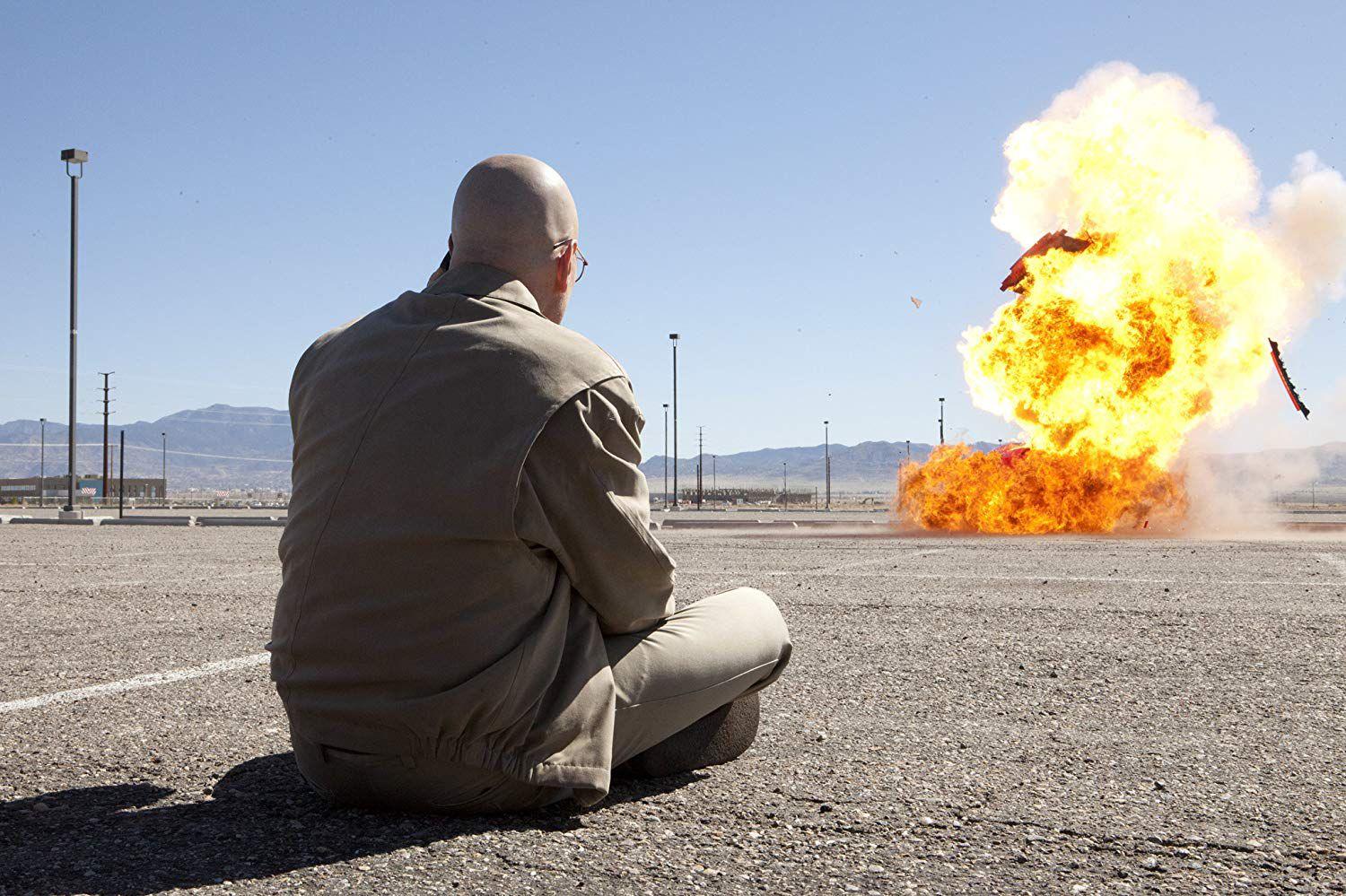
50. “Open House,” Season 4, Episode 3
I SAID CHEETOS, NOT FRITOS! I somehow empathized deeply with both Hank and Marie in this episode: receiving the wrong puffed-corn snack while laid up in a house-pital bed with a giant claw is one of the worst things I can imagine, while Marie’s lying-klepto romp through a bunch of real estate open houses was, I have to say, kind of #goals. But enough about marital bliss: This episode also includes Skyler’s tense negotiations to buy the car wash (with the help of an actor from The Saul School of Performing Arts); Walt’s purchase of a three-undo bottle of champagne, and Jesse arriving home from screaming into the void of the go-kart place to find that the last 30 minutes of Requiem for a Dream are being filmed in his trashed heap of a home. —Katie Baker
49. “Abiquiú,” Season 3, Episode 11
Well, Skyler sure is a quick study when it comes to that felony life! One minute she’s a justifiably angry lady filing for divorce, and the next minute she’s bringing up the benefits of spousal privilege to her husband, poo-pooing Saul Goodman’s idea of buying a laser tag spot, and explaining why she, and only she, is capable of running the money-laundering show at the car wash instead. Meanwhile, Jesse falls for a recovering addict while trying to sell drugs at NA meetings, then learns about her brother’s entanglement in his affairs, and Hank bristles at his wife’s chipper vibes as he struggles to re-learn how to walk. Then there’s Gus, who invites Walt over to his home for dinner and, at one point, hands him an enormous chef’s knife so that he can help prep. “Abiquiú” may have been a rare episode without any overt violence, but seeing the glimmer of that knife is chilling to the bone. —Katie Baker
48. “Kafkaesque,” Season 3, Episode 9
This episode is ultimately a bridge to more action, but it’s also an example of how good Breaking Bad is at exploring the repercussions of that action. In addition to one of the better cold opens, a history lesson on Los Pollos Hermanos giving way to an inside look at how the chicken actually gets made, “Kafkaesque” takes a long (perhaps too long), hard look at Jesse and Skyler’s wrestling with their own bad breaks. Before delivering one of his most memorable lines, Jesse tells Wynn Duffy the sobering tale of pushing himself to craft the perfect box in woodworking class, only to trade it for an ounce of weed. Later, Skyler cooks up a story about Walt’s gambling to explain how they can afford to pay Hank’s medical bills, giving her husband a very real look at the emotional toll of his double life. There’s nothing gripping about a four-minute Vo-tech Talk, but it builds the stakes for the showier moments to come. —Justin Verrier
47. “I See You,” Season 3, Episode 8
There’s a moment in this episode, when Walter is waiting with his family for news about Hank, who may or may not pull through after an attempt on his life. Walter’s fledgling drug operation is already going multinational at this point, the cartel is breathing down his neck, but in that waiting room, next to the people he’s actually accountable to, where he can’t escape into his work, he visibly squirms. There’s a table with a short leg, he notices, so Walter takes the subscription card out of a magazine and folds it into a shim. He tries and tries again until the table stops wobbling, because while everything else is out of his control, this he can fix. The tiny ways in which Gilligan builds out his principals, how he makes them feel human and alive, that’s what makes Breaking Bad sing. —Micah Peters
46. “Mandala,” Season 2, Episode 11
“Mandala” is an episode about choices. For Walt, it’s the struggle between securing a deal with—or really, just having a full conversation with—Gustavo Fring, and being present for the birth of his daughter. For Jesse, it’s the choice to start using meth again, after his friend is killed working for him, dragging Jane out of sobriety with him. Walt chooses the meeting with Fring, and misses Holly’s birth. Jesse gets so high on crystal he almost inadvertently sullies the deal. Both decisions will have consequences—the most severe of which will be doled out to others who’re simply caught in the crossfire. —Shaker Samman
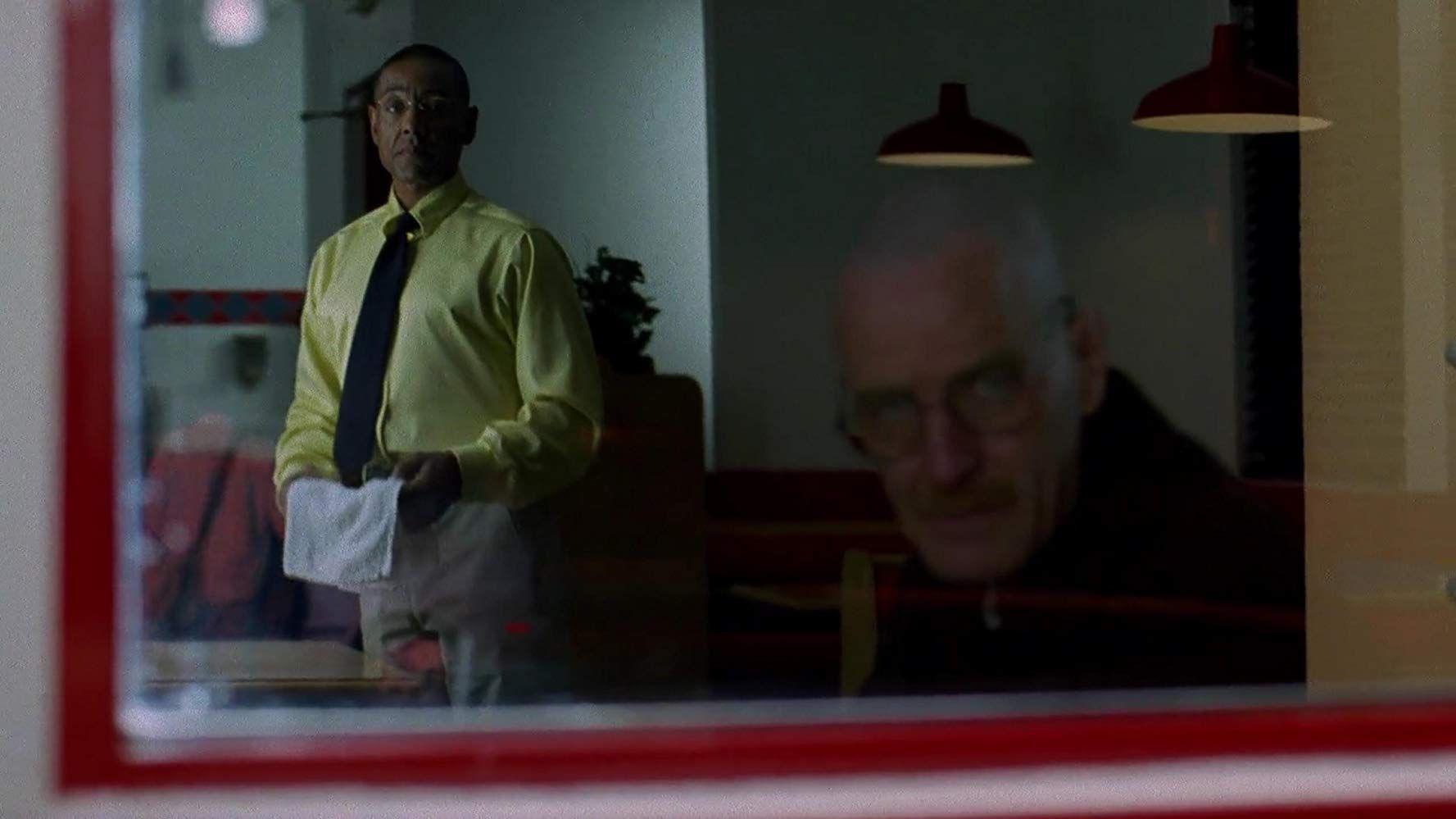
45. “Over,” Season 2, Episode 10
Walt’s obsessive home improvement kick is one of the funniest and most joyful plots of the show, as he rushes back and forth to the hardware store, buying a water heater and lumber and so forth, explaining to a bemused Walt Jr. what he’s doing, as if anyone else cared. But the best moment of this episode, maybe of the entire series to that point, is the episode’s final scene, in which he explains to an aspiring meth cook in the hardware store that he’s doing it all wrong, then follows him out to the parking lot to warn him out of his territory, all to the imposing strains of TV on the Radio’s “DLZ.” It’s perfect. —Michael Baumann
44. “Breakage,” Season 2, Episode 5
Jesse starts a small business, celebrating the inauguration of his new drug dealing network with [checks notes] a bag of pretzels and two bottles of budget soda. The highlight of the episode is a jaunty montage in which Badger, Combo, and Skinny Pete start slinging blue meth on the mean streets (and in a ghostly-blue-lit pet shop) of Albuquerque, watch the cash roll in, and then run into the rough customers and unpredictable characters you’d expect to encounter in this line of work. After Skinny Pete gets held up by a cackling methhead and her knife-wielding friend, we get another glimpse of our protagonists’ different viewpoints: Jesse, endearingly, wants to write it off as breakage, like a criminal version of Kmart. And Walt, initially skeptical of the whole idea, shows his dark side by demanding that Jesse lay down the law and keep the cash flowing. —Jack McCluskey
43. “Cancer Man,” Season 1, Episode 4
The great thing about “Cancer Man” is all the ways in which it needles Walter—at work, at home, at the bank—as his life grates on despite his prognosis, which earns him no reprieve. He’s going to die unspectacularly, not soon but sooner than he imagined, and the loud and obvious indication is that no one is really going to care. You can get all of that just from the scene at the bank, where Finance Airhead Guy holds up the line while droning on about walking on corporate water, and how easily he could earn more money and be a VP of something elsewhere if he really wanted. It’s then viscerally satisfying when Walter decides he’s not going to die without having lived, and blows Finance Airhead Guy’s stupid red Beamer sky high. —Micah Peters
42. “Buyout,” Season 5, Episode 6
Technically, “Buyout” is the bridge from the train heist to “Say My Name,” but it wouldn’t be late-stage Breaking Bad if it didn’t also feature one of the great Walt-Jesse scenes of the show’s run, one of the few in which Walt genuinely treats Jesse as a peer instead of talking down to him or otherwise patronizing him. The scene where Walt explains how selling his share of Gray Matter informs his decision now shows the weird combination of intimacy and distance to Walt and Jesse’s relationship, and Walt’s refusal to sell his share of the methylamine sets up the final descent into madness for Season 5.1. —Michael Baumann
41. “I.F.T.,” Season 3, Episode 3
An episode that begins with Walt cleaning up his own mess lays bare the impossibility of him ever really doing that. His poison’s tainted too many, ruined too much. He has trapped Skyler, who can’t keep him out of their house without revealing his criminality; to protect their family from the monster he’s become, she’ll have to tell a truth that will decimate it. He’s trapped Jesse, who’s now clean, but who lacks the will to do anything more than call the voice mail of the girlfriend whose death Walt caused. He’s trapped Hank, who can’t shake the panic attacks he’s suffering after traumas experienced due to Walt’s actions. He’s trapped himself, with his choices leaving him literally locked out of family life and marked for death by cartel assassins.
Everywhere we turn, we see people imprisoned by the terrible “sacrifices” that Walt insists he’s made for his family. (The ribbons so many wear to honor the victims of Wayfarer Flight 515 ensure we remember.) By now, though, we’ve seen too much to believe that. He tells Skyler he’s not going anywhere, because without his family, “I have nothing to lose.” So she strikes back with one choice she can make inside the box he’s placed her in: She cheats on him and tells him about it, making it clear that he’s already lost what he claims to hold so dear. He can’t ignore, rationalize, or fix “I fucked Ted.” Some stains don’t come out. —Dan Devine
40. “Bit by a Dead Bee,” Season 2, Episode 3
You might remember this as the episode when Walt bares it all in a minimart to give himself some cover after his latest misadventure in the New Mexico desert. But like many of the best Breaking Bad installments, the episode really shines for its quiet moments: the zoom-outs of Walt and Jesse trudging through the scorched landscape after escaping from the Salamancas; Skyler ignoring Walt’s playful talk and asking him about his secret second cellphone; Hank being celebrated for, and secretly dealing with the aftermath of, his run-in with Tuco. —Jack McCluskey
39. “Seven Thirty-Seven,” Season 2, Episode 1
The series’ first Bryan Cranston–directed episode gives us our first glimpse at the poor, one-eyed, charred pink teddy bear floating in Walt’s pool. It also ramps up the stakes with Tuco Salamanca, the show’s first terrifying big bad. It’s quaint now to imagine a time when Walt still felt conflicted about killing someone and Jesse had no idea how to use a gun, but so goes the plot of “Seven Thirty-Seven,” named for both the Boeing plane that crashes over Albuquerque and how many thousands of dollars Walt needs before he can stop dealing meth (right, because he’s going to stop). The episode ends in chilling fashion, with Tuco kidnapping Walt and Jesse before they have a chance to poison him. —Julie Kliegman
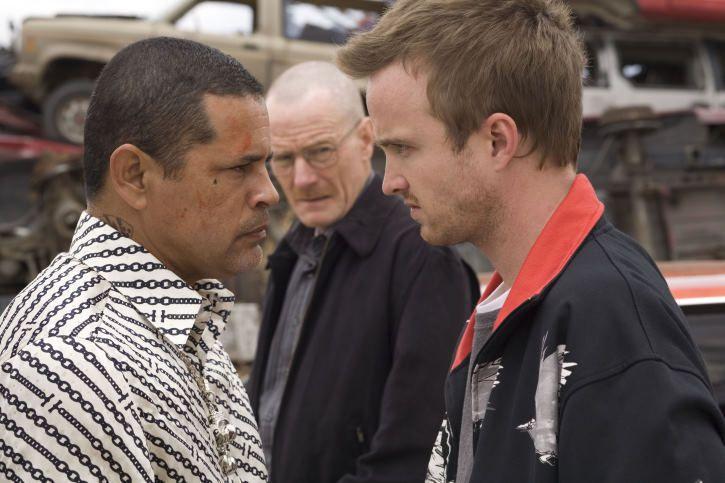
38. “Rabid Dog,” Season 5, Episode 12
There’s a point in this episode when Saul wonders whether Walt isn’t in “an Old Yeller–type situation.” The very next scene, Skyler suggests a similar thing to Walt, saying, “What’s one more?”
If this episode teaches us anything about Walter White, it’s that Jesse Pinkman isn’t some “rabid dog” to him. Walt cares about Jesse deeply, almost to the detriment of everything Heisenberg has worked for. One example of that risk: Jesse forms an unlikely partnership with Hank after discovering that Walt did, in fact, poison Brock. Lacking physical evidence, Hank hopes a surveillance meet-up between Walt and Jesse will deliver the goods. But at the last second, Jesse audibles for a “better plan” that involves Jesse threatening Walt “where he really lives.” And with that, Walt makes the call for a hit on his once-beloved rabid dog. —Jason Gallagher
37. “Madrigal,” Season 5, Episode 2
It’s the second episode of the last season of Breaking Bad; there’s a lot of shit happening, and nearly all of it is hitting the fan. The fallout of Gus Fring’s death, Skyler’s loan to Ted Beneke, Hank’s ongoing investigation, Walt’s manipulation of Jesse via the poisoning of his girlfriend’s son. And so where do we start in “Madrigal”? Inside a German laboratory testing out condiments, of course (the “franch” sounds delicious). It quickly becomes clear why the show has traveled so far, as we see a Los Pollos Hermanos sign being taken down from a wall in Madrigal’s lobby and pictures of Fring on a golfing trip with Mr. Schuler, our German taste tester. And as Schuler takes his own life with a defibrillator inside the most cinematic bathroom ever built, it’s clear just how far Fring’s operation spanned. After the credits run, the action returns to Albuquerque—but that quick detour is proof positive of Breaking Bad’s thrilling risk-taking, unexpected storytelling, and the extent to which Gilligan and Co. were feeling themselves by Season 5. —Andrew Gruttadaro
36. “Negro y Azul,” Season 2, Episode 7
First and foremost, it must be noted: This song is a banger.
By this episode, Walt and Jesse have stumbled into a larger-than-life reputation that far exceeds their moonlighting-teacher-and-screwup-ex-student reality, one that Walt is savvy enough to realize has far greater uses than a local Spanish-language radio hit. “Negro y Azul” also marks one of the first appearances of Krysten Ritter’s Jane, Jesse’s landlady turned love interest whose story is headed toward a tragic conclusion. For now, though, she and Jesse can “watch” a broken TV together, a rare moment of sweetness in an episode whose other major relationship sees Skyler securing her old job in a way Walt definitely wouldn’t approve of. On Breaking Bad, you take the scraps of humanity you can get. —Alison Herman
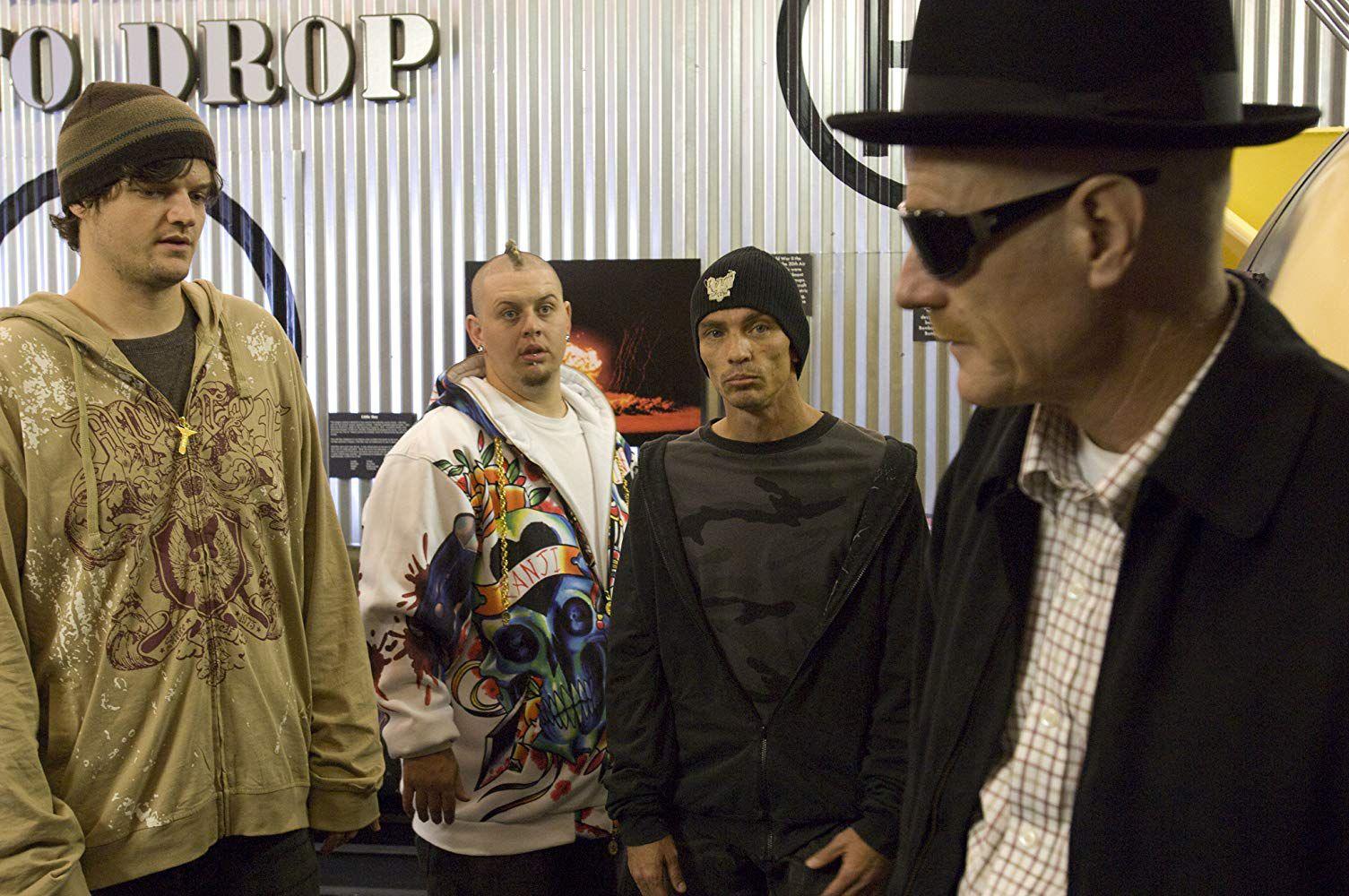
35. “A No-Rough-Stuff-Type Deal,” Season 1, Episode 7
“So you do have a plan!” Jesse says after Walter tells him they can cook meth without Sudafed. “Yeah, Mr. White! Yeah, science!”
That sentiment is the entire series in a nutshell. Unpacking everything contained in “A No-Rough-Stuff-Type Deal,” the Season 1 finale, would be harder than stealing a barrel of methylamine (roll it, morons!). Walt gets frisky with Skyler in a room full of teachers, says the meth smell on him is “sacred Navajo herbs,” and cooks $70,000 of meth in Jesse’s basement during an open house (you’re not seeing the basement, bitch!). But when Walter reveals the formula for his signature blue meth only for Jesse’s initial excitement to turn into reluctance, it’s the heart of the episode.
“Today is the first day of the rest of your life,” Walt tells Jesse. “But what kind of life will it be, huh?”
“I don’t know!” Jesse says.
In fact, even the writers didn’t know what was next for Jesse. There were two more scheduled episodes in Season 1, but this one became the season finale when the writer’s strike cut the season short. The original plan was for Jesse to die in the first season, but they changed their mind. Now Jesse gets his own movie. Hopefully the writers, like Walter, have a plan to cook without their key ingredient. —Danny Heifetz
34. “Gray Matter,” Season 1, Episode 5
The opening episodes of Breaking Bad provide one explanation for why a high school teacher would start cooking meth. “Gray Matter” reveals what else animates Walt’s descent: a towering ego. We learn about the company he cofounded with grad school buddy Elliott. We learn that, after Walt moved on, Elliott became a rich Nobel Prize winner, and is now married to Gretchen, once Walter’s lab assistant and paramour. From the second he enters Elliott’s birthday party, Walt chafes at his former peer’s success. He seethes with rage at the idea that Elliott wants to hire him back only because he knows about the cancer, calling the offer “some fig leaf—some face-saving bullshit that allowed me to generously accept his charity.” He declines. “Why would anyone in their right mind choose not to do treatment? Especially when it’s completely paid for?” asks a stunned Skyler. Walt’s answer: He wants, needs, “a choice” in what happens to him. She reminds him that his choices affect others, but he hears only so much of that over the blood pounding in his ears. He’ll do chemo, but won’t take the money; he’ll cook with Jesse to cover the bills, and lie to everybody about it. “Gray Matter” gave Walt a way out. It also showed us that he’d rather get in even deeper than swallow his pride. —Dan Devine
33. “Sunset,” Season 3, Episode 6
“Name one thing in this world that is not negotiable.”
These words echo through the entire episode, from the second Walt says them to some doofy real estate agent after delivering divorce papers to Skyler, all the way to the final scene, where we see Gus discussing the one thing in his world that is not negotiable—Walter White.
Throughout this extremely stressful episode, we discover what is negotiable. For example, Walt and Jesse’s RV, which doubles as the mobile meth lab where we’ve spent much of the series thus far, is sadly destroyed after Hank nearly breaks in with a crowbar in one of the most intense scenes of the season. And in the end we find out what Gus is willing to negotiate with as a vengeful bargaining chip to the Cousins—Hank Schrader. —Jason Gallagher
32. “Crazy Handful of Nothin’,” Season 1, Episode 6
“Crazy Handful of Nothin’” is our pivotal introduction to Heisenberg, as a cleanly shaven Walt shows just how far he’s willing to go to get his fat stacks up. Walt’s decision to shave his head is a preemptive move as he starts to see the early effects of his chemo treatment, but the new look and alter ego also become synonymous with the character’s continued descent into darkness and rebirth into a life of crime.
Breaking Bad loves to reel you into an episode during its opening moments by showing a glimpse of the future before retreading the precursory sequence of events. “Crazy Handful of Nothin’” begins with a building emitting sparks and smoke and our first view of bald Walt as he walks away from the crowded scene with a bloody bag of cash in hand. “No matter what happens, no more bloodshed,” Walt tells Jesse, while the future scene of chaos layers over a previous conversation regarding their (supposed) new business model. “No violence.”
As the rest of the episode—and series—unfolds, there’s plenty more violence, and plenty more bloodshed. And Tuco Salamanca is first to know. —Daniel Chin
31. “Cat’s in the Bag …,” Season 1, Episode 2
With the fundamentals of the pilot established—chem teacher, cancer, Jesse Pinkman, meth—Breaking Bad’s second episode gives us Walter White’s first steps toward evil. In “Cat’s in the Bag …,” he’s still far from it: He happily bores Skyler and Walt Jr. over pancakes with tales of faculty mixups, and when the meth business presents its first truly loathsome imperative—he must kill the dealer who attempted to rob the RV in the previous episode, or else—he makes him a sandwich instead. But even with this first reordering of moral imperatives, Walt is changing more than he realizes. When, at the ultrasound appointment where they’ve just learned that they’re having a baby girl, Skyler demands to know what’s going on, Walt asks her, his voice sickly sweet, if she would “climb down out of [his] ass.” “Can you do that?” he asks. “Will you do that for me, honey? Will you please, just once, get off my ass?” Skyler is shell-shocked; Walt, for the first of so many times, doesn’t care at all. —Claire McNear
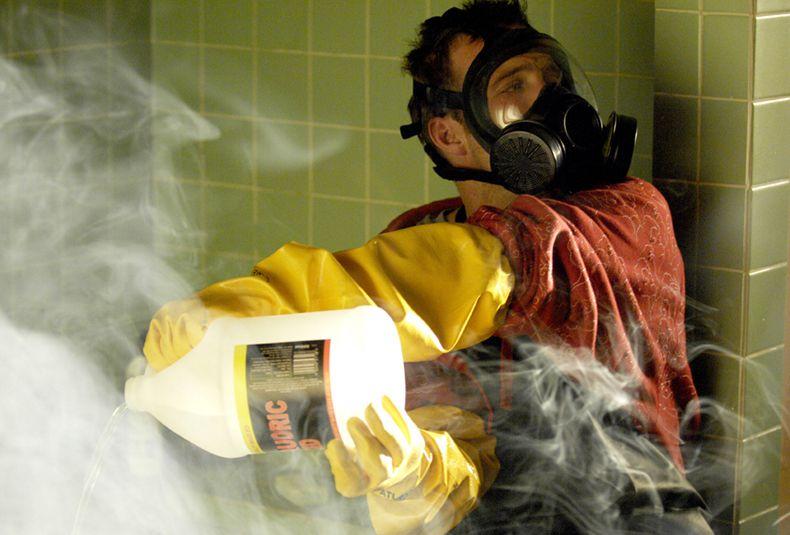
30. “Fifty-One,” Season 5, Episode 4
The worst Breaking Bad take was always that Skyler is a drag. She’s more than capable of playing Walt’s game, and in “Fifty-One” she stands up for herself using the only language Walt understands anymore: leverage, manipulation, ruthlessness, and bald-faced lying. Frankly, it’s refreshing that somebody called Walt out for his own hubris—even if he is the smartest guy in the room, how could he possibly shrug off the possibility that his life of crime might pose a danger to his wife and children? Skyler isn’t willing to bet Walt Jr.’s and Holly’s lives on the proposition that Walt will stay two steps ahead of the bad guys forever. Nor should she be. —Michael Baumann
29. “End Times,” Season 4, Episode 12
This is what scholars call an “EVERYTHING IS HAPPENING!” episode.
The walls are closing in on Walter White. The DEA is one hidden stairway away from uncovering the Los Pollos Hermanos laundromat/hidden meth lab that is surely covered in Walt’s DNA. Then we see Jesse confront Walt at his house and accuse him of poisoning Brock with a ricin-laced cigarette. This leads to an intense showdown between Jesse’s gun and Walt’s forehead. And finally, Gus, who is desperate to kill Walt, just needs Jesse’s approval to do so. And he damn near gets it until Walt plays one of the most impressive games of bullshit gymnastics we’ve ever seen.
This leads to Walt and Jesse joining forces to kill Gus via a homemade car bomb. Does it work? Or does Gus, without rhyme or reason, call an inexplicable audible and walk away from his car?
Let’s just say the walls get even tighter for Walter White. —Jason Gallagher
28. “ABQ,” Season 2, Episode 13
This season finale is heavy, even for Breaking Bad. It features Jesse Pinkman’s breakdown following the overdose death of his girlfriend Jane—in a gut-wrenching performance, Aaron Paul shows just how swallowed up Jesse is in grief and self-loathing. Later, two planes crash into each other due to the actions of Jane’s distraught air traffic controller father. (Also: Mike Ehrmantraut is introduced to the audience.)
Still, the episode belongs to Skyler, who has wised up to Walt’s lying. In one brutal scene that Anna Gunn orchestrates perfectly, Skyler reveals, while packing a weekend bag, exactly how she uncovered the secrets that her husband had kept from her for so long. Then, she kicks Walt out of the house. —Alan Siegel
27. “4 Days Out,” Season 2, Episode 9
Walt’s realizing he doesn’t have much profit left (after a lesson in money laundering with Saul) leads to one of the best lines of the season: “Congratulations,” Saul says, “You’ve just left your family a secondhand Subaru!”
“4 Days Out” is cyclical desperation: Desperate for more money, Walt convinces Jesse to cook for four days in the desert. Desperate for as much product as possible, they ignore that the generator is out of gas. Desperate for Skyler to believe him, Walt doesn’t call when the RV has broken down in the desert. It leads to one of the many times Walt lashes out at Jesse, but also one of the more rare times they’re tender with each other (tender in their own way). When Jesse drops Walt off at the airport, Jesse reassures him: “Whatever happens, your family will get your share.” —Haley O’Shaughnessy
26. “Peekaboo,” Season 2, Episode 6
You’d be forgiven for finding Jesse—lifelong nonachiever and firm supporter of the formal term for a female dog—mildly irritating at the beginning of the series. “Peekaboo” is a helpful course corrective, underlining Jesse’s humanity once you peel a few layers back. He is tasked with handling two junkies who stole Skinny Pete’s meth and freezes upon discovering they have an adorable, neglected little boy in the house. It’s an understatement to point out that the kid isn’t in a suitable living environment: If nothing else, “Peekaboo” is a depressing window into the other side of a meth-enabled community. The awfulness is punctuated with one of the junkies’ gruesome death by stolen ATM machine—one of the more, um, creative kills in Breaking Bad history. It’s episodes like these, though, that make you root for Jesse to leave this awful world behind—so here’s hoping he actually will by the end of El Camino. —Miles Surrey
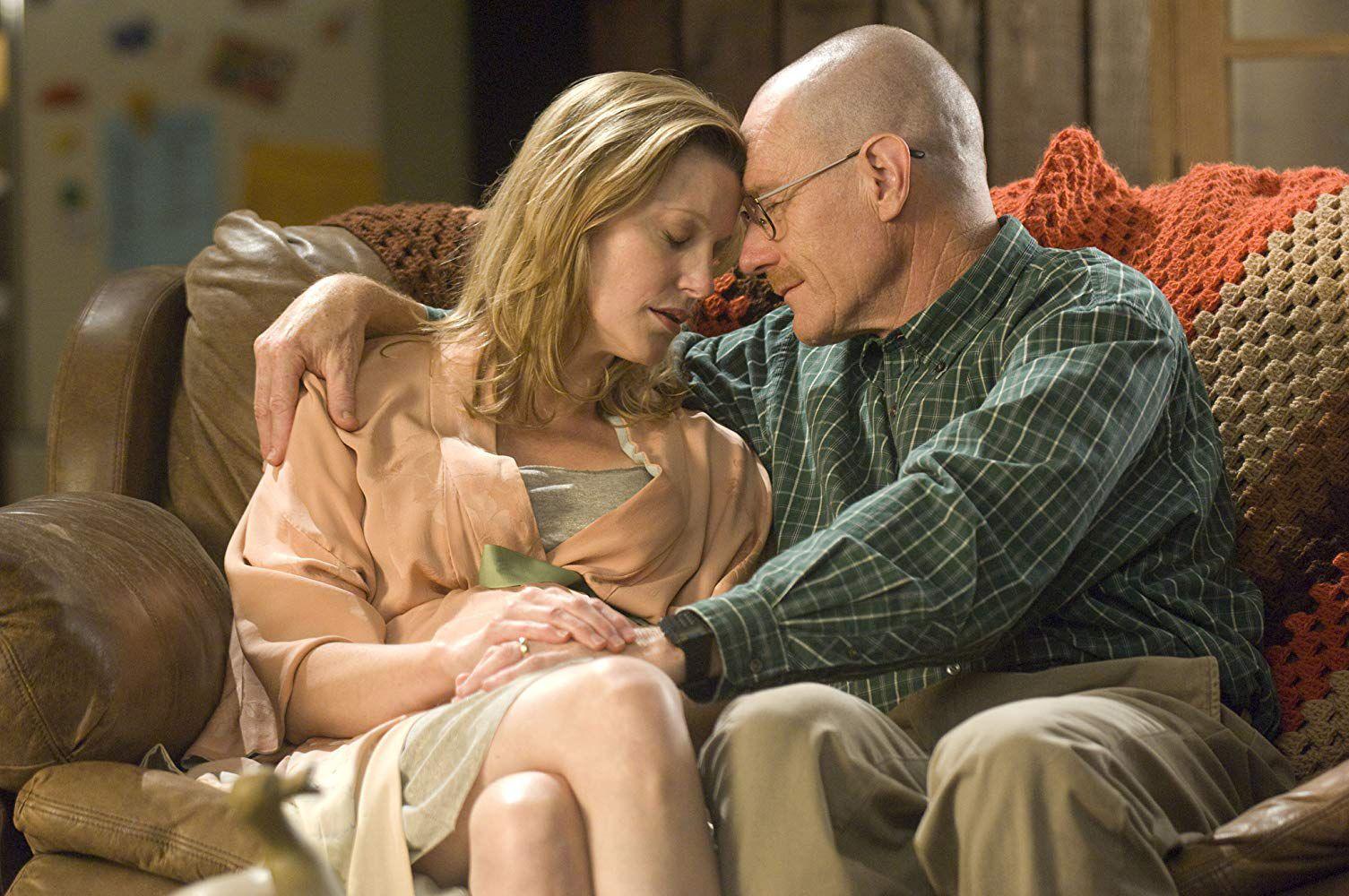
25. “Grilled,” Season 2, Episode 2
One of Breaking Bad’s greatest successes is how it slowly builds up tension and develops plotlines over the course of the series. As Walt and Jesse are held captive in the middle of the desert by Tuco, “Grilled” introduces us to Tuco’s uncle, Hector Salamanca, a seemingly insignificant character that two seasons later winds up being the key to defeating Gustavo Fring. And the episode is also hugely important for Hank, who shows off his investigative prowess as he tracks down Jesse’s mother before eventually locating his car and a wounded Tuco. Walt and Jesse are hiding mere yards away from Hank as he kills Tuco in the first of many close calls in the long-running cat-and-mouse chase between the DEA hero and the soon-to-be legendary Heisenberg. —Daniel Chin
24. “Confessions,” Season 5, Episode 11
Jesse attempts to reckon right from wrong while profiting off criminality and addiction the entire series, but occasionally, like in “Confessions,” he lands on an action that he can absolutely label “wrong,” when he realizes that Walt poisoned Brock. By contrast, Walt leans into being the person who is doing wrong. He sends Hank and Marie a video that would frame Hank in an attempt to get his brother-in-law to back off. But there’s still a sliver of hope that Walt is still good somewhere when he hugs Jesse and tells him to go start over somewhere with a new identity. —Haley O’Shaughnessy
23. “Live Free or Die,” Season 5, Episode 1
In a strong premiere to Breaking Bad’s stellar final season, “Live Free or Die” begins with another one of the series’ trademark flash-forwards. Walt, with a head full of hair and some new glasses, is celebrating his 52nd birthday with his customary eggs and bacon (the real stuff this time) before purchasing an M60 machine gun in the Denny’s parking lot.
But back in the present, Walt and Jesse need to deal with the fallout of Gustavo’s demise, which requires tracking down Mike to erase any existing footage from Gus’s meth lab that could be traced back to the three of them. And with Gus now gone, a noticeable power shift begins to come into focus as Walt threatens Saul, owns Mike, and forgives Skyler, all while possessing a heightened sense of control, arrogance, and menace previously seen only in small doses. While Walt originally entered into this life of crime and violence to provide for his family, Walt’s rise to power is now fully consuming him—and he seems to be enjoying it.
Oh, and perhaps most importantly, the episode gave us this truly iconic Jesse moment: —Daniel Chin
22. “Cornered,” Season 4, Episode 6
The one with the one who knocks.
In one of the series’ most famous scenes, Walt finally—briefly—drops the lie and shows Skyler who he really is: a monster in a pair of bifocals, capable of untold violence when he’s pushed into a corner. “I am not in danger, Skyler,” he thunders as his wife looks on with a quivering lip. “I am the danger.” So what brings on this moment of truthfulness? His ego, of course. Worried about Walt after learning of Gale’s death, Skyler implores her husband to consider backing away from the meth trade. The mere suggestion that Walt could be weak brings out the darkest side of him that she has ever seen. And it drives her away—literally, to the Four Corners, where she considers an escape to Colorado. Skyler ultimately resigns herself to staying in New Mexico, but she returns home knowing for the first time exactly who she has to be afraid of. As Walt prepares to launch into another soliloquy about protecting his family, Skyler shuts him down with a less iconic, but more gutting line than anything Walt said to her earlier: “Someone has to protect this family from the man who protects this family.” —Justin Sayles
21. “Blood Money,” Season 5, Episode 9
Hank knows who Heisenberg is now, and there’s no turning back. “Blood Money,” the opener to Season 5, Part 2, kicks off one of the great stretch runs in television history in a relatively quiet manner. There are a few excellent scenes featuring a deeply guilt-ridden Jesse, and there’s an all-time Skinny Pete and Badger moment (can someone green-light that Star Trek movie?). But the fireworks here are saved for the closing garage confrontation between Walt and Hank. After Walt asks about the tracking device he found on his car, Hank belts his brother-in-law and begins barking at him about the heinous act he’s committed. Walt tries to play the cancer card one more time, and Hank is so thrown off that he says he doesn’t even know who he’s talking to. It sets up one of the more chilling lines Walt’s ever uttered: “If that’s true, if you don’t know who I am, then maybe your best course ... would be to tread lightly.” —Justin Sayles
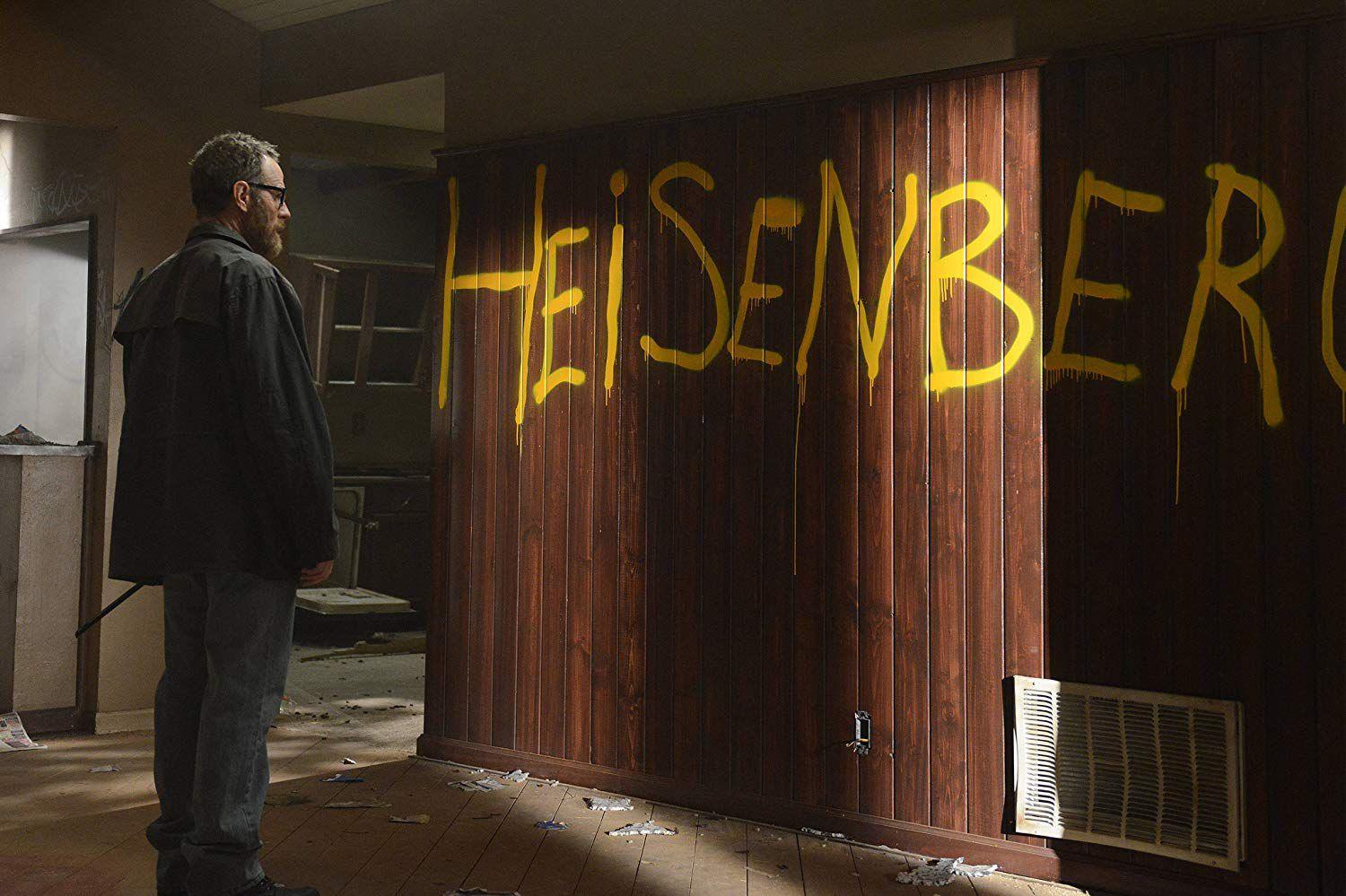
20. “Salud,” Season 4, Episode 10
There aren’t many moments when Jesse gets to defend his intelligence. (Difficult when you’re partnered with a disagreeable chemist for most of the show.) But in Mexico, we see a different, more confident Jesse. With Mike and Gus (and no Walt), Jesse tells the head of the Mexico lab, “I’m the guy that your boss brought here to teach you how to do your job.” He then insists on not doing anything until the lab is cleaned. It’s very Walteresque. He demands that the entire place is scrubbed and prepared properly, and in the end, his product is nearly as pure as Walt’s. (Jesse has another newfound moment of maturity later in the episode, when he saves Mike and Gus after a shots ring out at Don Eladio’s.) The episode also shows how much of an effect Jesse’s had on Walt, despite the two just getting into a physical fight; when Walt Jr.—the birthday boy—visits his dad at his apartment, Walt calls his son “Jesse” as he falls asleep. —Haley O’Shaughnessy
19. “Felina,” Season 5, Episode 16
Breaking Bad was the first must-see TV show of the binge-watch Netflix era, and the last installment, Felina, was on par with The Sopranos and Lost for anticipated prestige TV finales. Unlike Lost’s, the Breaking Bad finale successfully landed the plane. The most devastating moment of the episode comes when Walt says goodbye to Skyler and gives his grand confession.
“If I have to hear one more time,” Skyler says through tears, “that you did this for the family—”
“I did it for me.”
But as fondly as we remember the show ending, the final 20 minutes of this episode has more holes than the bullet-riddled neo-nazi HQ. Walt’s plan to kill Uncle Jack and Co. with his automated trunk machine gun depended on him parking perpendicular in front of their building.
The show’s losing attention to detail at the end of its run is disappointing, but where the finale fails is that Breaking Bad’s big bads were Neo-Nazis. A show dedicated to exploring morality’s infinite shades of gray ended with Walter White’s gunning down the most black-and-white villain in the American storytelling catalog. That Walt kills a half-dozen people in the final 10 minutes and we feel zero moral ambiguity is the real “Felina” plot twist. —Danny Heifetz
18. “Dead Freight,” Season 5, Episode 5
The first time you watch “Dead Freight,” you forget all about the unknown kid in the cold open who rides his dirt bike through the desert, dismounts to catch a tarantula, then gets back on the bike as a train whistle sounds. The next 45 minutes are too intense to fixate on an innocent stranger. Guided by Lydia, the team of Walt, Jesse, Mike, and Todd robs a train, siphoning off a thousand gallons of methylamine in a perfectly choreographed, intricately timed heist. “You guys thought of everything,” Todd says obsequiously when Walt and Jesse walk him through the plan, and they swell with pride. Save for a Good Samaritan who offers unwanted roadside assistance—another narrative misdirection—the theft proceeds smoothly. But the crooks didn’t count on the kid, who sees their celebration and gives them a faltering wave, which Todd returns. Then the sociopathic sidekick, sworn to secrecy in an earlier scene, pulls his pistol and shoots the unwitting witness as Jesse screams, the glamor of the gang’s Jesse James–style caper destroyed in an instant.
“Out burying bodies?” Skyler asks Walt when she sees the dirt on his knees from a dry run. “Robbing a train,” he smugly responds. This is Breaking Bad; in the end, Walt was destined to do both. —Ben Lindbergh
17. “Phoenix,” Season 2, Episode 12
Breaking Bad puts the viewer through some shit; by the time you meet Todd, your innards are as cut up as Jesse’s face is in El Camino. But Jane’s choking to death on her own vomit, for 33 agonizing seconds, is the most haunting scene in the show’s run, and perhaps its most important. Walter is finally in a good place by the end of Season 2—his cancer is in remission, he’s $480,000 richer, there are elephants on TV, and there’s water on Mars. But as he reveals to his new daughter when he shows her the stacks of cash from his big score with Gus, in a moment almost as telling as the episode’s conclusion, his life of crime has become life-affirming. His face before the episode’s cut to black underlines it all: Walter is no more; Heisenberg hath risen. The final scene was so devastating the performance nearly broke Bryan Cranston. —Justin Verrier
16. “Hermanos,” Season 4, Episode 8
For most of the show’s run, there was no character more enigmatic than Gustavo Fring—the Chilean American chicken mogul and meth kingpin. He struck fear into viewer’s hearts from his first appearance; he’s cold, calculated, and deadly. The secrecy surrounding his character and his motives contributed to those takeaways, and it wasn’t until “Hermanos” that we learned part of his history. The elder Salamanca and Don Eladio once conspired to kill Gus’s partner Max, forcing Gus to watch as blood poured from Max’s lifeless face. It’s why he hates Hector Salamanca as much as he does. If only he knew what was coming. —Shaker Samman
15. “Half Measures,” Season 3, Episode 12
Aaron Paul earned his first Emmy for his work in this episode, a wrenching portrait of the corrosive effect of Jesse’s quest for vengeance and the utter tragedy of how his desire to protect his loved ones manifests, time and again, in more loss and pain. Pair that with Bryan Cranston delivering one of Walt’s most iconic moments of the series when his Aztek rumbles into the frame and over the dealers Jesse is hunting after Gus’s paper truce results in Tomás’s death, and Season 3’s penultimate installment appears to be built on the twin pillars of titanic performances from its primary stars. But like so many of the best Breaking Bad episodes, “Half Measures” hinges on a secret ingredient—the variable no other show or cook would think to include that gives the batch its signature hue. Mike’s “No more half measures,” speech to Walt, which gives the episode its name and sets up the season’s decisive “Full Measure” finale, is a master class in microcosms. Jonathan Banks’s blood-soaked fable is at once a chilling bit of backstory for Mike, a crystalizing parable for Walt, and, crucially, a treatise on the way regret shapes our lives, and the ensuing distances we’ll go to justify our behavior to ourselves. “I chose a half measure, when I should have gone all the way,” Mike tells Walt. “I’ll never make that mistake again.” —Mallory Rubin
14. “Fly,” Season 3, Episode 10
Necessity is the mother of invention, so thank God Breaking Bad went over budget in Season 3. Had production not run into the red, we may never have gotten this Rian Johnson–helmed bottle episode. Because of overages, Vince Gilligan and Co. were forced to shoot an entire episode in Gus Fring’s $8 million hole in the ground. Whatever the resulting 47 minutes lack in action or intensity, they more than make up for in character development. The stress of finding a winged intruder aside, this is essentially a lazy (somewhat drugged) hangout between two not-quite friends. Walt and Jesse bicker, commiserate, and confess (almost) to one another, but the action never feels staged. Johnson mixes Samuel Beckett with Sergio Leone, giving viewers a deftly shot meditation on regret. —Chris Ryan
13. “Gliding Over All,” Season 5, Episode 8
Hank had to eventually figure out that Walt is indeed the meth-cooking, mass-murdering maniac Heisenberg that he’s been chasing all along. The epiphany comes while he’s sitting on his brother-in-law’s throne and reaches for a book of Walt Whitman’s poetry—the episode takes its name from the other W.W.’s Gliding O’er All—which leads to flashbacks and dot connecting. It is not the stuff of stellar detective work, but it is a handy device to end the midseason finale and zoom us into the accelerated madness that concludes the series. But more than Hank’s revelation, what makes Gliding All Over so powerful is arguably the single best set piece in show history. With the help of Todd’s neo-Nazi uncle Jack and his merry band of homicidal white supremacists, Walt orders the execution of 10 of Mike’s guys, in three different prisons, all in a tight two-minute window. While Nat King Cole croons the delightful “Pick Yourself Up,” Mike’s former operators are dispatched in increasingly brutal and bloody fashion. They are shanked in the shower, stabbed in the hallway, tossed over railings and, most gruesomely, barbecued alive in their cell. It’s awesome. If that doesn’t make you want to do prison murder, why are you even reading this? —John Gonzalez
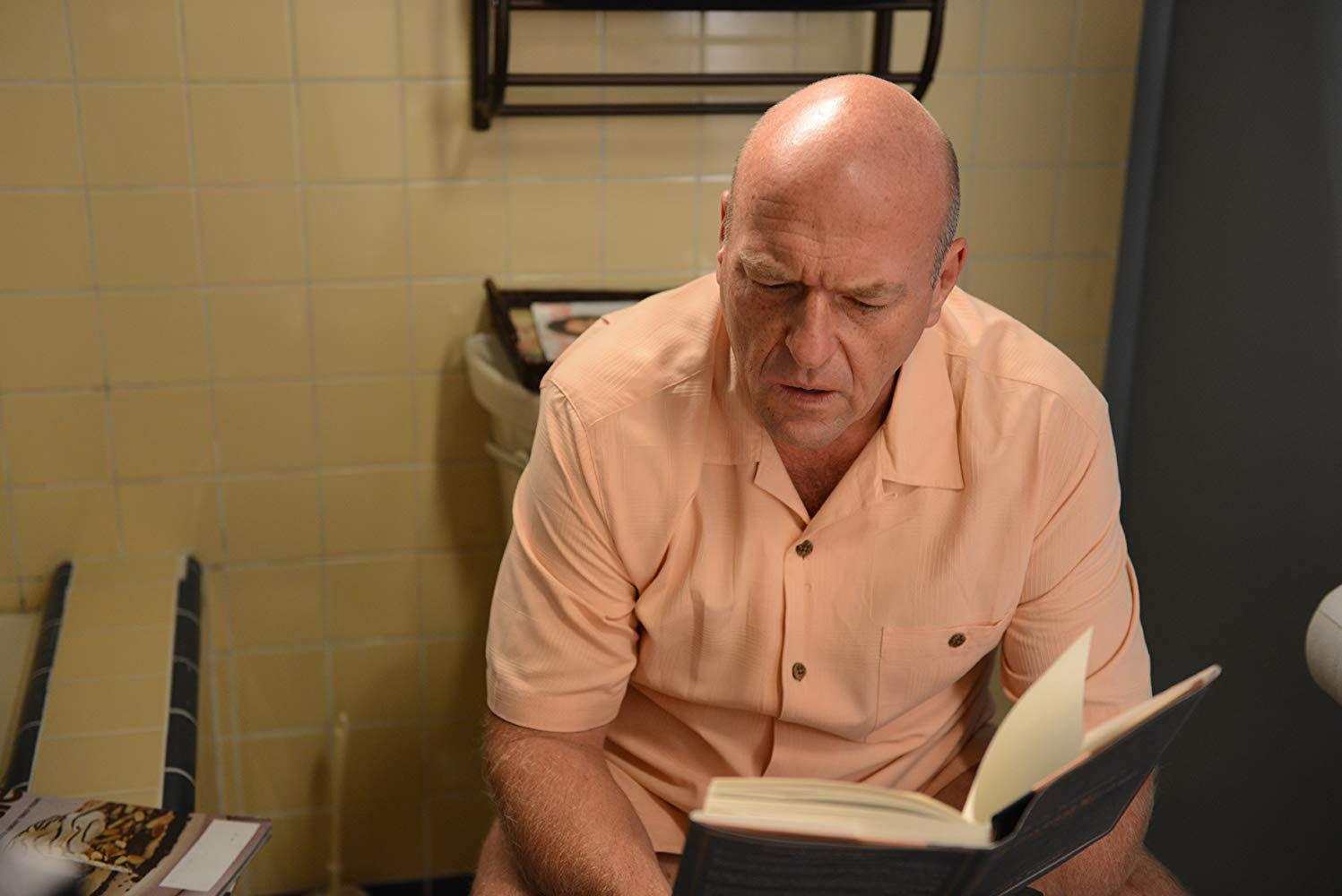
12. “Better Call Saul,” Season 2, Episode 8
After Badger falls victim to police entrapment (you have to tell me if you’re a cop; it’s in the constitution), Jesse and Walt scramble to find someone who can free him from custody before he has a chance to give up the name of his supplier. Enter Saul Goodman. Walt is apprehensive at first as he survey Saul’s, erm, less than stellar office in a strip mall. But when the going gets tough, you don’t want a criminal lawyer, you want a criminal lawyer. Saul eventually gets Badger off the hook and offers to help Walt take his operation to the next level. Jimmy McGill, welcome to the resistance. —Shaker Samman
11. “To’hajiilee,” Season 5, Episode 13
The series comes full circle in its preantepenultimate episode, when Walt and Jesse return to the scene of their inaugural cook under dramatically different circumstances. After a hiatus in which Walt tried to lie low at the car wash, Heisenberg returns in full force, oozing fake concern on a visit to Andrea and Brock, hiring Jack to take out Jesse, and agreeing to mentor Todd through one more batch of Blue. In the heart-stopping second half of the episode, Walt’s ego and greed get the better of him, and so do Jesse and Hank, whose unsuspected betrayal and solid detective work, respectively, take the mastermind by surprise. When Walt—cornered by his brother-in-law, racked by cancer, burned by being double-crossed, and unwilling to order a hit on Hank—finally surrenders, Cranston’s haggard, deflated face, Michelle MacLaren’s stark direction, and the desert setting’s stillness make it seem as if the storm is over. But the silence is soon broken as the twist-filled hour ends on a loud, deliciously cruel cliff-hanger, with Walt, Jesse, and Hank frozen mid-firefight for what was an agonizing week in September 2013. —Ben Lindbergh
10. “... And the Bag’s in the River,” Season 1, Episode 3
“There are moments in the series where Walt reaches a new low, and you think he can’t go any lower,” Betsy Brandt, who plays Marie Schrader, once told The Ringer. “And then he just takes the elevator down another floor. He’s just like way down into the basement.” There are many examples of this phenomenon, one being here, when Walt is deciding whether to kill Krazy-8, who he and Jesse have imprisoned.
After some morbidly funny deliberations—he writes out a list of reasons for and against murder; one of his arguments against it is “Judeo/Christian principles”—and the realization that Krazy-8 is planning on attacking him with a shard of broken plate, Walt strangles the drug dealer to death. He does the deed with a bike lock that had chained Krazy-8 to a metal pole located, fittingly, in Jesse’s basement. —Alan Siegel
9. “Crawl Space,” Season 4, Episode 11
For many of us, Breaking Bad lives on as a series of snapshots and sounds engraved forever inside of our minds. Hank on the toilet, looking up from Leaves of Grass and the horror of his discovery; Gus walking out of Hector’s room, straightening his tie with his face blown apart; the pink teddy bear floating in the White family pool, another victim of Walt’s unbiased destruction. The slant of the pizza on the roof; the play of the light as the sun sets in the desert; the crackle and shimmer of a fresh batch of blue. When we think of “Crawl Space,” before we recollect the brilliant specifics that lead Walt to the burrow beneath his home, we can recall with unfractured clarity the episode’s haunting closing image: Walt lying, covered in spider webs and filth and his own failings, utterly defeated, entombed as though in a coffin of his own making as the camera, like Skyler and all hope, pulls away. We can hear Walt’s frenzied screams and maniacal laughter as he learns that Skyler gave away the money he now needs to help his family flee to safety amid Gus’s pursuit. We can feel Skyler’s dread as she answers a call from Marie, petrified for Hank’s life following a DEA tip call that a desperate Walt asked Saul to facilitate. It’s one of the most unnerving and harrowing sequences in a series defined by them, and one of the final moments when we allow ourselves to believe that Walt might escape, only to see him sink into the dirt and his despair, as though into hell. —Mallory Rubin
8. “Say My Name,” Season 5, Episode 7
“Say My Name” opens with perhaps the best exchange in the series: Walt’s demanding rival kingpin Declan refers to him as Heisenberg. “You’re goddamn right!” Walt boasts, to which I reflexively say to myself every time I rewatch the scene: “Hell yes.” Obviously, this is meant to hammer home that Walt is on cloud nine, his ego unchecked after eliminating Gus and taking over his empire. But Walt’s taste for power won’t ever be satiated, and so when Mike refuses to give up the names of Gus’s men he’s paying to keep quiet in prison, Walt shoots him. The tragic irony of “Say My Name” is Walt realizes he could’ve gotten those names from Lydia—sure enough, he eventually Red Wedding’d the inmates—while the show’s ever capable hitman is fatally wounded from a rare lapse in concentration. Instead of leaving the series unscathed—does anyone, really?—Mike’s final request is that Walt stops talking so he may die in peace. It’s a small consolation that one of Breaking Bad’s best characters stayed on-brand to the very end. —Miles Surrey
7. “Granite State,” Season 5, Episode 15
“Mr. Lambert, welcome to New Hampshire.” “Granite State” had the unenviable task of following up “Ozymandias,” regarded by many as the best episode of Breaking Bad, and setting up the finale, “Felina.” As such, it doesn’t often get mentioned as one of the great episodes of the show, but that will hopefully be corrected over time. A season’s worth of plot is crammed into a single episode, full of terror and tenderness. We wave goodbye to Saul Goodman (have fun in Nebraska, homie. Hope you like cinnamon rolls), see more tragedy heaped on the back of Jesse Pinkman, witness the misery of Skyler’s life in the wake of Walter’s flight, and set up his final return to Albuquerque. Epic in scope, “Granite State” never feels too tidy or rushed. It would have been a fitting ending for the series, but Walter had one more experiment to conduct. —Chris Ryan
6. “Pilot,” Season 1, Episode 1
Is there any more indelible image than a pantsless chemistry teacher sprinting through the New Mexico desert with a gas mask on his head? Right away, Breaking Bad was a more tense, more breakneck show than its Golden Age peers, which plumbed the depths of masculinity through staid dissections of Freudian psychology. Breaking Bad is an unabashed hybrid of crime, action, and thriller, an identity the pilot’s in medias res opener and how-did-we-get-here structure embraces right off the bat. Walt’s corruption would turn out to be more of a slow burn, but the addictive hook of the pilot helped power viewers through the couple of seasons it took for Breaking Bad to hit its stride. —Alison Herman
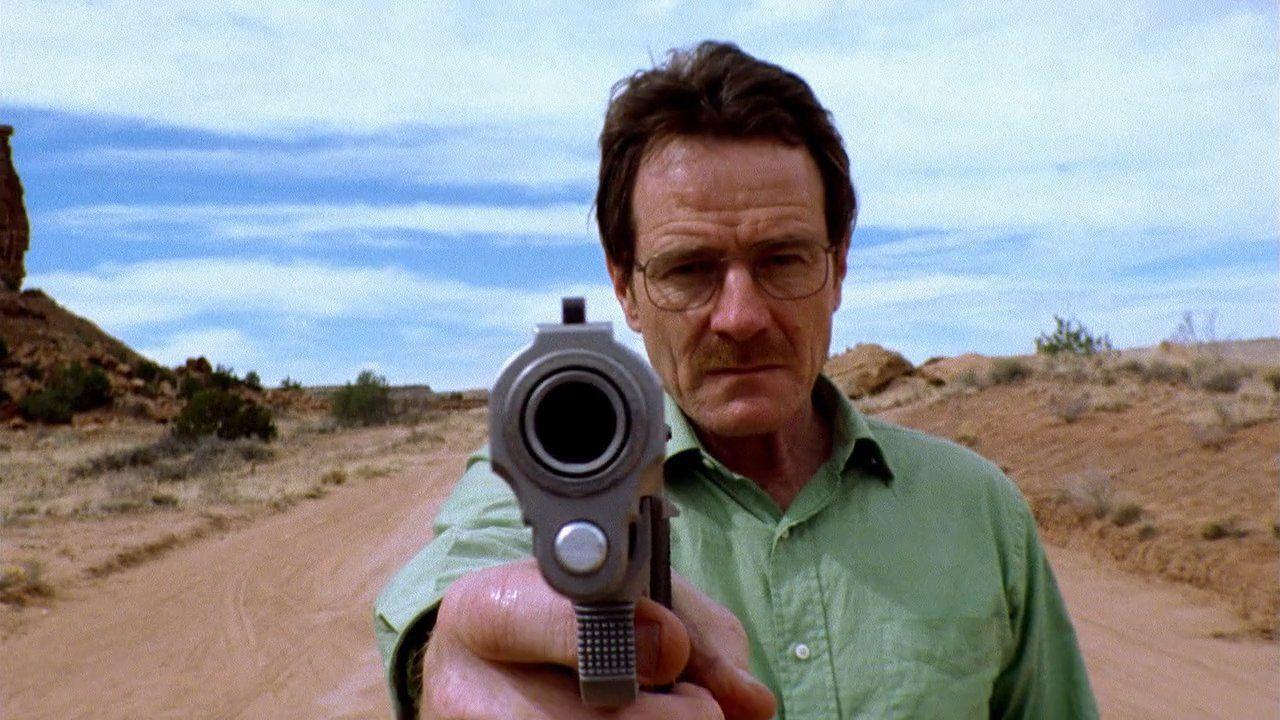
5. “Box Cutter,” Season 4, Episode 1
A season premiere is supposed to set the table. “Box Cutter” does a bit of that—we learn that Season 4 will largely be concerned with Walt and Jesse’s new, somewhat indentured employment with Gus Fring. It then flips the table, trashes the dining room, and starts a kitchen fire, burning the whole house down. You can take a bird’s-eye view of Breaking Bad and see it as the tragic descent of a decent man into indecent behavior, but Walter White knows better than that. This is a show about chain reactions. Everything that happens in “Box Cutter” comes out of Gale’s ultimately tragic admission of inadequacy that opens the episode. Everything that follows is nearly flawless storytelling, pushing the narrative beyond tidy antihero nonsense and into hell. There are less grotesque, more humane, and perhaps more memorable episodes of the series, but “Box Cutter” found this show at its perfect fighting weight. —Chris Ryan
4. “One Minute,” Season 3, Episode 7
“Maybe you have a guardian angel.” —George Merkert
The final sequence here—the parking lot showdown that leaves the Cousins and a bystander dead and Hank not far behind—is such a magnificent piece of filmmaking that it eclipses everything in the episode that came before it. Which is a shame, as “One Minute” features some of the finest work by Dean Norris and Aaron Paul in Breaking Bad’s entire run. Hank is a broken man, suspended from the agency after pummeling Jesse in the episode’s opening moments. He cries on Marie’s shoulder and talks about the darkness he’s felt inside of him since killing Tuco—he’s profoundly changed, but as we see in his meetings with the agency brass investigating his attack on Jesse, he’ll carry himself with whatever dignity he has left.
Jesse, meanwhile, is stuck in a hospital bed and ready to quit Walt. “Ever since I met you, everything I’ve ever cared about is gone,” he says to his onetime mentor as he chokes back tears. “Ruined, turned to shit, dead, ever since I hooked up with the great Heisenberg.” That speech makes it all the more heart-wrenching when Walt manipulates Jesse into returning to the lab and dropping the charges against Hank. No matter how gruesome the final scene gets, the true violence of this episode happens in the ones leading up to it, when we see the full toll Walt’s presence has taken on these two men’s lives. —Justin Sayles
3. “Face Off,” Season 4, Episode 13
Originally conceived as a possible series ender before AMC gave Gilligan the green light for a fifth and final season, “Face Off,” the Season 4 finale, features some of Breaking Bad’s most indelible images, including Hector Salamanca’s hate-filled face as he furiously flicks his bell for the last time and a dying Gus Fring’s Terminatoresque exposed skull as he tightens his tie like a noose. It’s the more quietly chilling last scene, though, that makes “Face Off”—which earned seven Emmy nominations, tied with “Ozymandias” for the most of any episode in the series—so stunning. After Walt tells Skyler “I won,” Gilligan’s camera reveals the terms of his victory: a descent into total depravity, represented by the potted lily of the valley that he’d used to poison Brock and manipulate Jesse. That innocuous-looking flower informs us where Walt is headed, as does Norah Jones in the closing music cue: “that place you can’t come back / where the last painting’s gone and all that’s left is black.” —Ben Lindbergh
2. “Full Measure,” Season 3, Episode 13
When Walt doesn’t stop Jane from choking to death on her own vomit in the second season, it is, per Bryan Cranston’s own admission, Heisenberg’s point of no return. “Full Measure,” the third season finale, flips the script by having Jesse Pinkman drawn into a similar dilemma: To save himself and Walt, he has to kill Gale. (Otherwise, with Gale perfecting Walt’s meth recipe, Gus has no reason to keep them alive.) If everything leading up to “Full Measure” demonstrated the horrifyingly boundless depths of Walt’s capacity for bloodshed, the Season 3 finale reaffirms that Jesse isn’t wired in the same way. Sure, Jesse may pull the trigger in “Full Measure,” but the guilt that manifests from murdering an innocent(ish?) man haunts him for the rest of the series. Not that any of this matters to Gale. —Miles Surrey
1. “Ozymandias,” Season 5, Episode 14
It all comes down to the phone call, a sort of Rorschach test to separate one school of Breaking Bad fans from the next. Is Walt dumping one last wave of vitriol on Skyler, no longer bothering to shield his darkest thoughts as he prepares to go on the run? Or is he choosing to end their marriage with a belated olive branch, making Skyler seem like a passive victim to the authorities listening in? The genius of “Ozymandias,” and of Breaking Bad, is that it’s both. To quote Trent Reznor, “Ozymandias” is the hour when Walt’s empire of dirt comes crumbling down. Many still consider it Breaking Bad’s true finale, the moment when Walt’s monstrous selfishness finally shatters his family unit for good. There are still a few hours left in the show’s bravura final run, but “Ozymandias” is indisputably its peak. —Alison Herman
